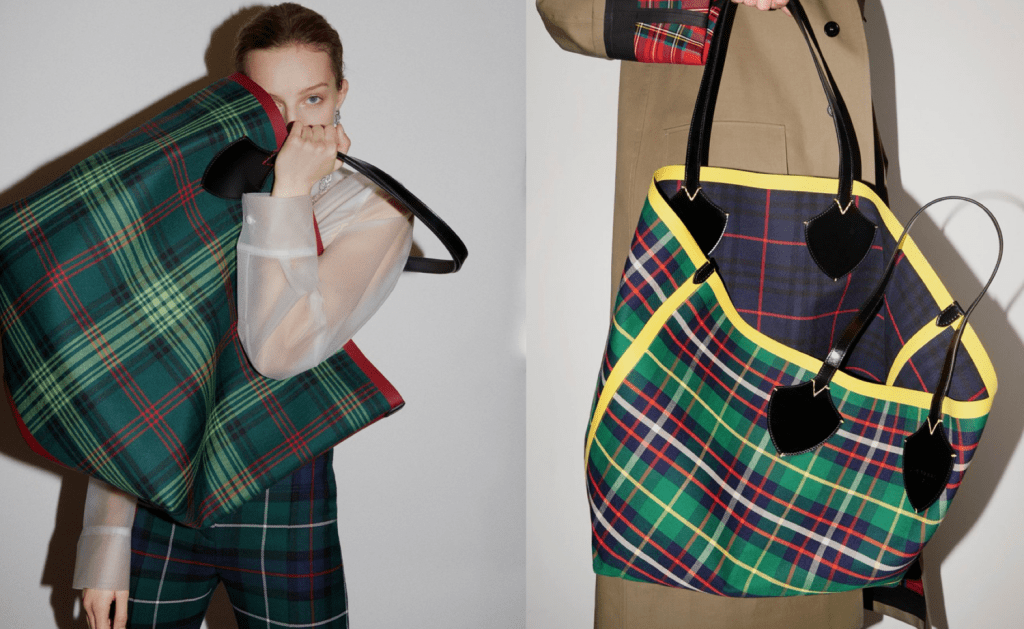“Most runway pieces never get produced. They’re marketing exercises. The legacy brands aren’t in the fashion business anymore. They’re selling handbags,” Cameron Silver, founder of Decades, the Los Angeles vintage clothing store, told the Daily Beast last year. Silver is referring to a marked paradox in the fashion industry: while runway shows make it seem as though fashion is in the business of selling clothing, many brands – especially big name ones – do not rely on the sale of garments to derive the majority of their revenue. Instead, money is made by way of handbags and other leather goods and largely licensed products, such as eyewear and fragrances – at least some of which never appears on the runway at all.
As Bloomberg reported last year, “Louis Vuitton knows fashion is a money pit and yet, keeps throwing money in it.” The publication’s Robert Williams and Carol Matlack wrote, “Producing collections and staging ever more glamorous shows tends to wipe out profit for pricey clothing.”
This is hardly a Louis Vuitton-specific phenomenon; for most profitable brands, runway garments are a direct drain on their bottom line. And yet, brands continue to trot models out on the runway each season in garments that often never make the transition to retail in any significant quantities and if they do, tend to add little positive return to a brand’s balance sheet. So, what gives?
Well, there are two relatively straight forward and largely intertwined reasons for this phenomenon. The first is marketing. Generally speaking (and with exceptions, of course), runway garments could be characterized more aptly as marketing props for brands – for the purpose of enabling and/or maintaining lucrative licensing deals – than direct buying opportunities for consumers. Runway shows “can create an aura around the brand,” per Williams and Matlack, which can be monetized in other ways.
As many legacy fashion houses learned early on, couture and ready-to-wear collections allow them to indirectly reach a large audience (by way of media and consumer attention that follows from runway shows and red carpet placements, etc.). Such events enable brands to establish and/or maintain a reputation for luxury or fashionability, which they can use to sell more accessible (and inexpensive to produce) items.
These products – no shortage of which tend to be manufactured and marketed by third party companies, called licensees (more about the big business of licensing here) – are sold at much lower price points than a designer dress, for instance. However, they are still sold at significant markups from how much they cost to produce, hence, the $100+ price tag on certain fashion branded perfumes. This enables brands to experience higher turnover and higher profits, and has spawned a large-scale industry-wide reliance on licensed goods, as well as other accessible goods that are in some cases, increasingly being made in-house, as brands attempt to regain complete control over their supply chains and brand images.
Chanel, for instance, is one of the few brands to produce its fragrances and cosmetics in house (although it does maintain a license deal with Luxottica for eyewear). While it has established a “high position” in apparel and leather goods, according to Bloomberg, it derives the bulk of its 6.5 billion euros of retail equivalent sales from its high-margin fragrances and cosmetics.
But what about bags?
While most runway garments prove to be ineffective revenue-drivers, the same cannot be said of accessories. According to a report released by Exane BNP Paribas in 2016, accessories – namely, handbags – dominate in the luxury market. They represent one of the few categories with high sales densities and full-price sell-through rates. As of 2016, they accounted for almost 30 percent of the total global luxury market, up from just 18 percent in 2003.
For Gucci, Saint Laurent, Bottega Veneta, and Balenciaga’s parent company, Kering, leather goods represent over 50 percent of the €7.9 billion that the conglomerate’s luxury division earned in revenue for the 2015 fiscal year. Ready-to-wear accounted for only 16 percent. It is worth noting, of course, that there are exceptions: Saint Laurent’s ready-to-wear staples, such as biker jackets and ripped-up jeans, sold quite well for the brand. Its Chelsea boots, however, were a hotter-selling item, as well.
As for Chanel, the breakdown is a bit more obscure, as the company is privately held and until very recently did not disclose financial performance figures. Having said that, Biz Journals speculatively broke down the brand’s potential earning by category several years ago, finding that its fashion division – which is largely made up of handbags – likely amounted to upwards of 50 percent of the brand’s $2.3 billion and $3 billion annual revenues, with the remaining portion being derived from cosmetics. More recently, MainFirst estimated that Chanel’s 2015 net income amounted to €1.2 billion, or about $1.3 billion, on revenue of €6.5 billion.
Add to these figures, the emerging popularity of low-cost but high price tag branded t-shirts and sweatshirts and you have yet an additional source of wearable, sellable products to help boost brands’ bottom lines.
*This article was initially published in March 2017.











